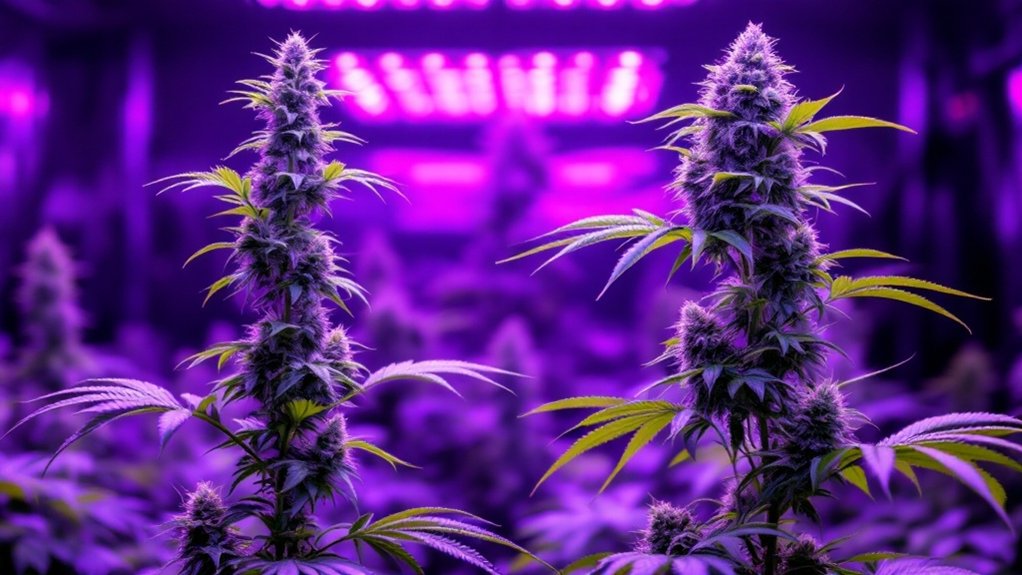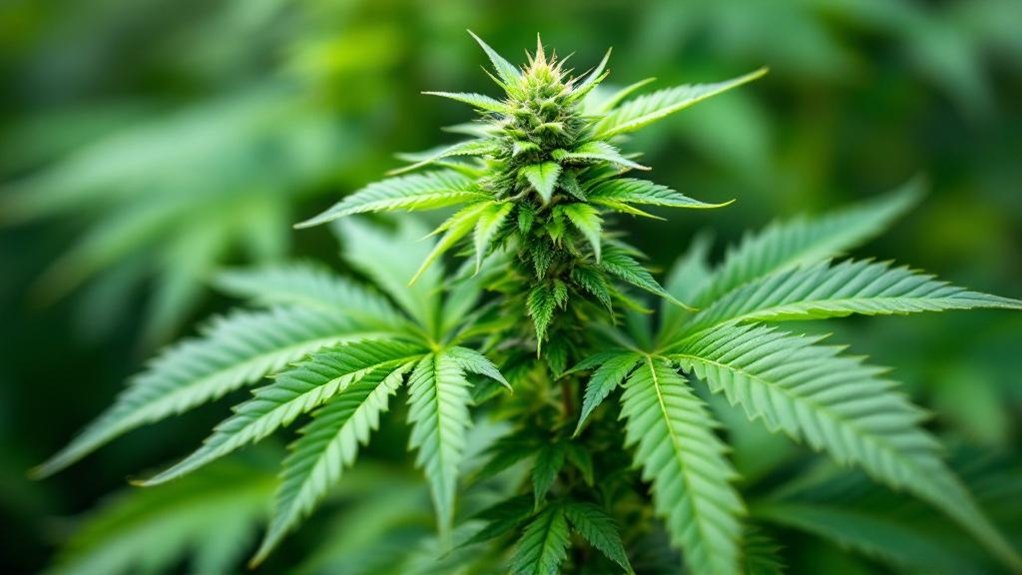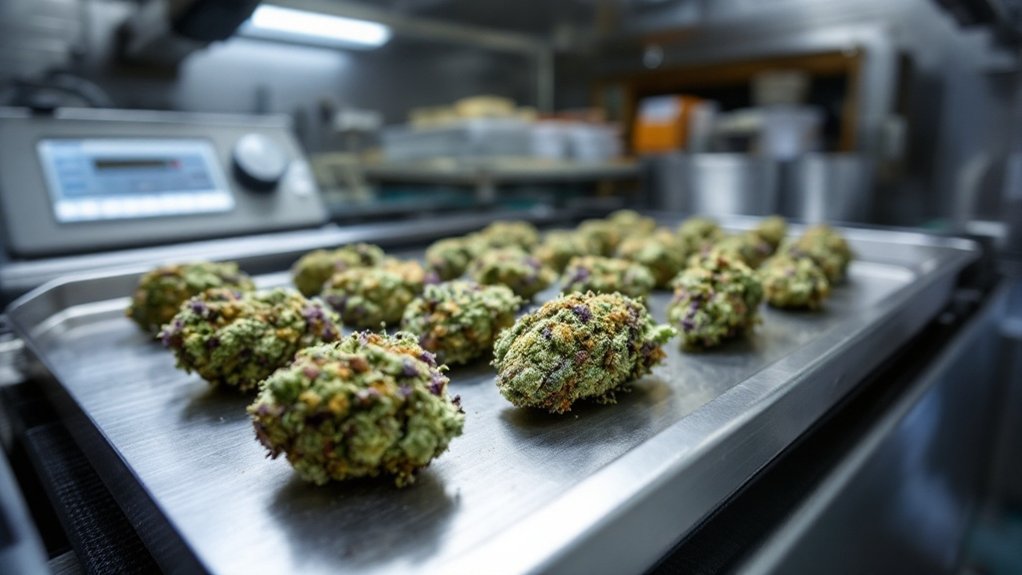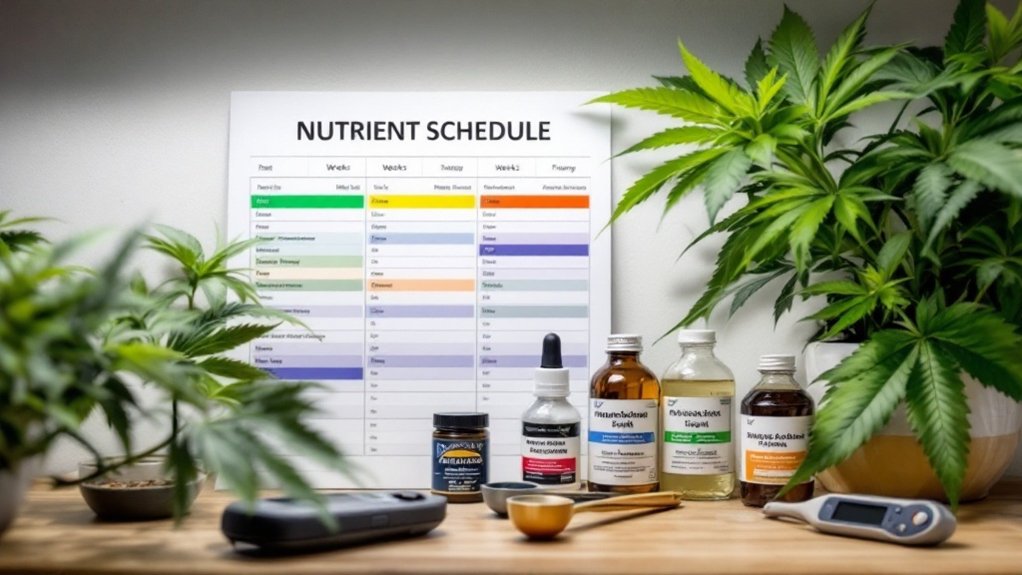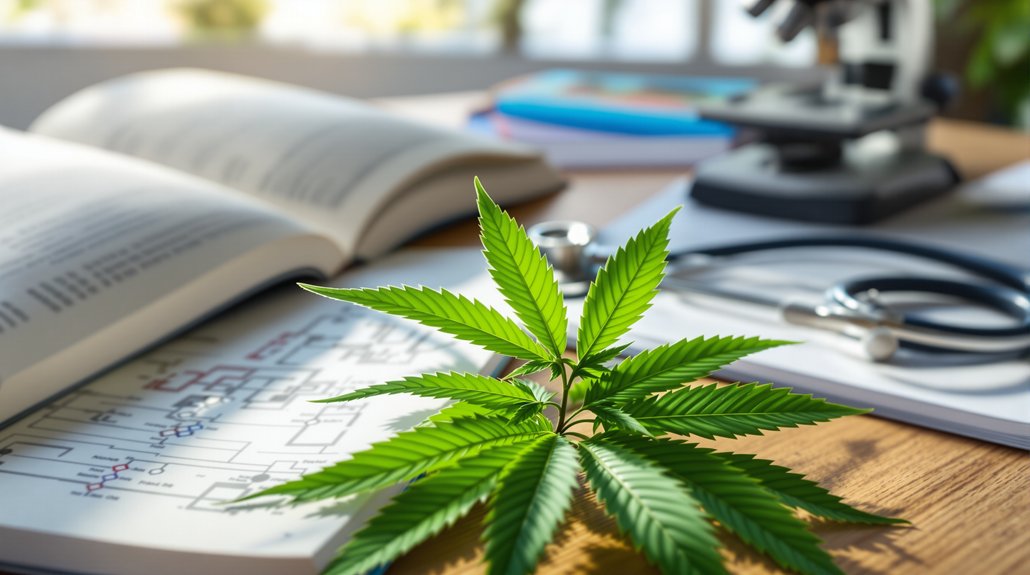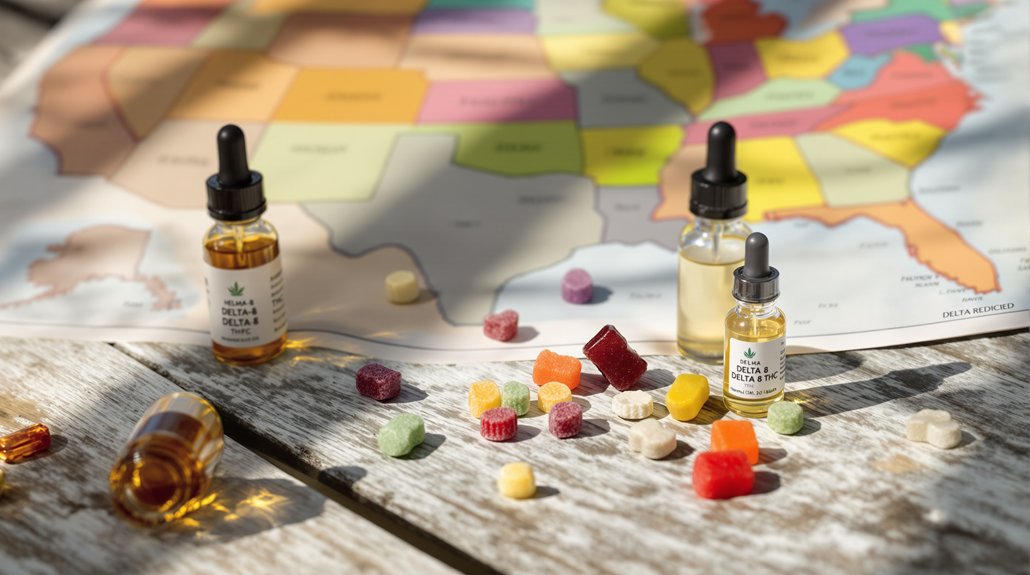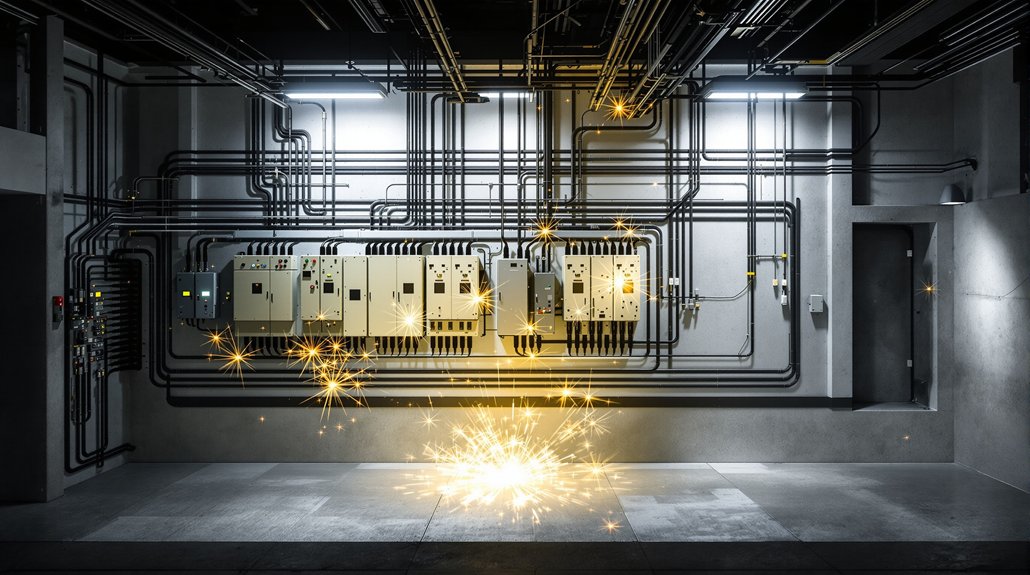Cannabis sativa strains are characterized by tall growth habits, thin elongated leaves, and typically higher THC content that produces energizing, cerebral effects. These varieties enhance creativity, focus, and social interaction, making them ideal for daytime use. Hybrid strains, in contrast, result from cross-breeding different cannabis varieties, offering tailored experiences that combine characteristics of their parent lineages—from uplifting sativa qualities to more relaxing effects, depending on their genetic composition. The extensive diversity of hybrid profiles provides consumers with specialized options for their specific needs.
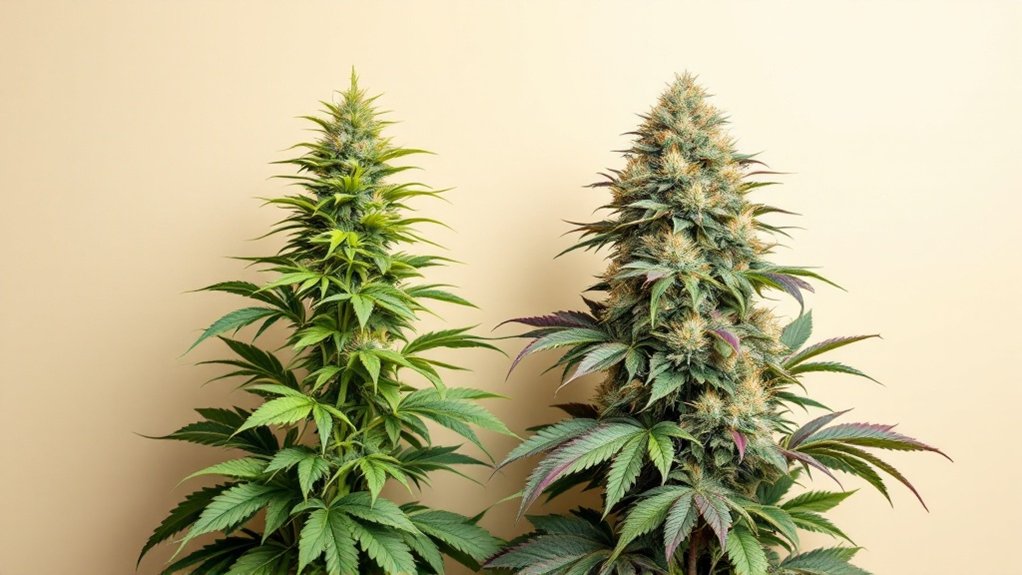
When exploring the diverse landscape of cannabis varieties, understanding the distinctions between hybrid and sativa strains becomes essential for both casual consumers and enthusiasts alike.
Cannabis sativa plants exhibit distinctive physical characteristics, growing notably taller than their indica counterparts—often reaching heights between 5 and 18 feet or more. These plants feature thin, elongated leaves with fewer branches compared to indica varieties, making them easily identifiable to cultivators and botanists. Sativa plants typically require a longer growing period due to their longer flowering cycles.
The chemical composition of sativa strains typically reveals higher THC concentrations than found in indica varieties. This chemical profile contributes considerably to the strain’s effects and therapeutic potential.
Hybrid strains, created through cross-breeding different cannabis varieties, offer blended cannabinoid profiles that can be tailored to produce specific effects. Through careful selection of parent plants, growers cultivate hybrids that contain various combinations of cannabinoids and terpenes. The development of hybrid strains has dramatically expanded the available options, with thousands of strains now existing in the cannabis marketplace.
Sativa strains are widely recognized for their uplifting, energizing effects that often enhance creativity and promote alertness. Users frequently report increased focus and improved social interaction after consuming these varieties. These effects are primarily attributed to sativas’ high THC content and lower CBD levels compared to other cannabis types.
Hybrid strains, depending on their genetic makeup, can offer a spectrum of effects ranging from mainly sativa-like to primarily indica-like experiences. Balanced hybrids, containing approximately equal genetic contributions from both parent types, typically provide relaxation without inducing excessive sedation.
The physical sensations associated with sativa consumption generally include energizing bodily effects that complement the cerebral stimulation. Hybrid varieties produce physical effects that reflect their genetic heritage—sativa-dominant hybrids typically deliver energy with reduced anxiety compared to pure sativas.
Individual body chemistry plays a considerable role in determining how a person responds to different cannabis strains, creating variation in reported experiences.
Many consumers choose sativa strains for daytime activities, creative pursuits, or social gatherings due to their stimulating properties. Hybrid varieties appeal to those seeking specific combinations of effects, such as creativity paired with mild relaxation.
Cultivators face different challenges when growing these varieties, as sativa plants require longer flowering periods than indicas. Hybrid breeding represents a sophisticated attempt to combine the most desirable characteristics from different cannabis varieties, resulting in plants that express traits from both parent lineages in varying degrees.
Frequently Asked Questions
What Are the Best Growing Conditions for Hybrid and Sativa Strains?
Hybrid strains thrive in adaptable environments that blend parent strain requirements, with temperatures between 70-85°F (21-29°C) during day cycles and 60-70°F (16-21°C)at night.
These varieties often tolerate fluctuating conditions better than their pure counterparts.
Sativa strains demand warmer, more tropical settings with consistent humidity levels of 40-60% and extended light exposure of 18-24 hours during vegetative growth.
They require significant vertical space to accommodate their tall, lanky growth patterns and longer flowering periods.
How Do Hybrid and Sativa Strains Affect Creativity Differently?
Sativa strains typically induce cerebral, energizing effects that enhance divergent thinking and idea generation, making them particularly valuable for brainstorming and overcoming creative blocks.
Their high THC content and terpenes like limonene promote heightened sensory perception and verbal fluency.
Hybrids, by contrast, offer a balanced experience that combines sativa’s mental stimulation with relaxation, supporting both creative inspiration and sustained focus during extended creative sessions.
This allows artists to develop complex projects without fatigue or distraction.
Can Medical Patients Safely Mix Hybrid and Sativa Strains?
Medical patients can safely mix hybrid and sativa strains with proper precautions.
The combination’s effects depend on specific cannabinoid and terpene profiles rather than strain classification alone. Patients should start with low doses, gradually titrate, and monitor for enhanced or unexpected effects.
Healthcare provider consultation remains essential, particularly for individuals with comorbidities or medication regimens.
Laboratory-tested products with consistent profiles help guarantee predictable outcomes when combining different cannabis varieties for therapeutic purposes.
Which Strain Is Better for Managing Chronic Pain Conditions?
Research indicates that indica strains are generally preferred for chronic pain management due to their effectiveness with neuropathy, joint pain, and non-migraine headaches.
Hybrid strains offer a balanced approach, targeting pain on multiple levels while minimizing excessive sedation.
Although sativa strains contain beneficial anti-inflammatory properties, patient surveys suggest they’re less effective for thorough pain relief.
The cannabinoid and terpene profiles, rather than strain classification alone, ultimately determine therapeutic efficacy.
Individual responses vary considerably, necessitating personalized treatment approaches.
How Do THC-To-CBD Ratios Compare Between Hybrid and Sativa Varieties?
Sativa strains typically exhibit higher THC-to-CBD ratios (approximately 3:58 or 3:5), favoring strong psychoactive effects with minimal CBD to moderate those experiences.
Hybrid strains, however, display markedly more variation in their cannabinoid profiles. Some hybrids are bred with extreme ratios like 1:229 (Bedrocan), while others maintain balanced 1:1 proportions or even favor CBD (such as Harlequin at 5:26).
This diversity in hybrid cannabinoid ratios allows for more targeted effects and experiences.
